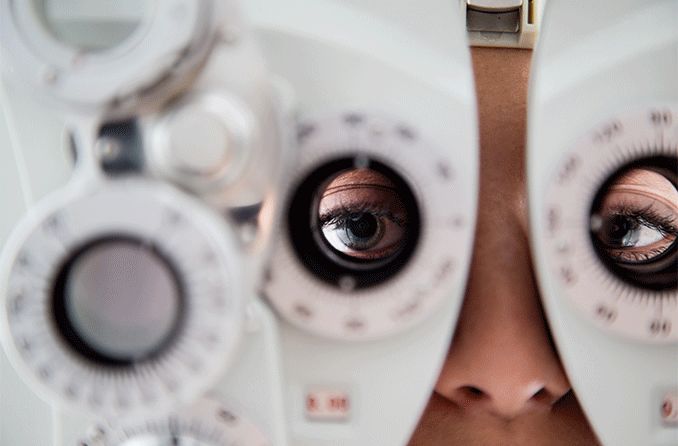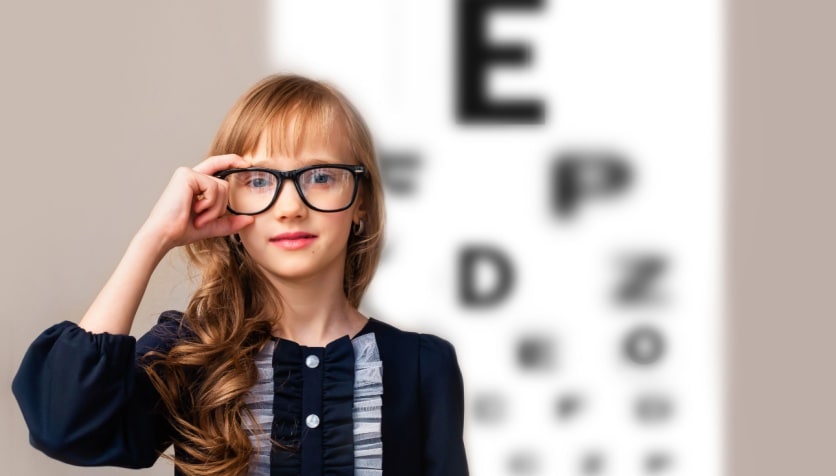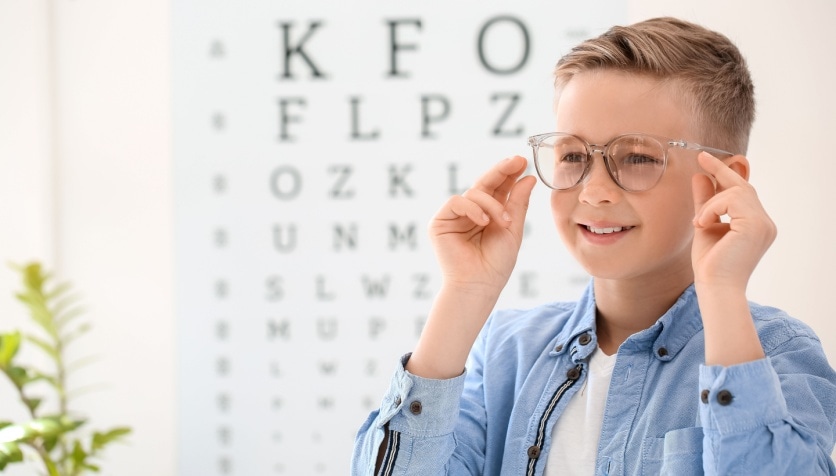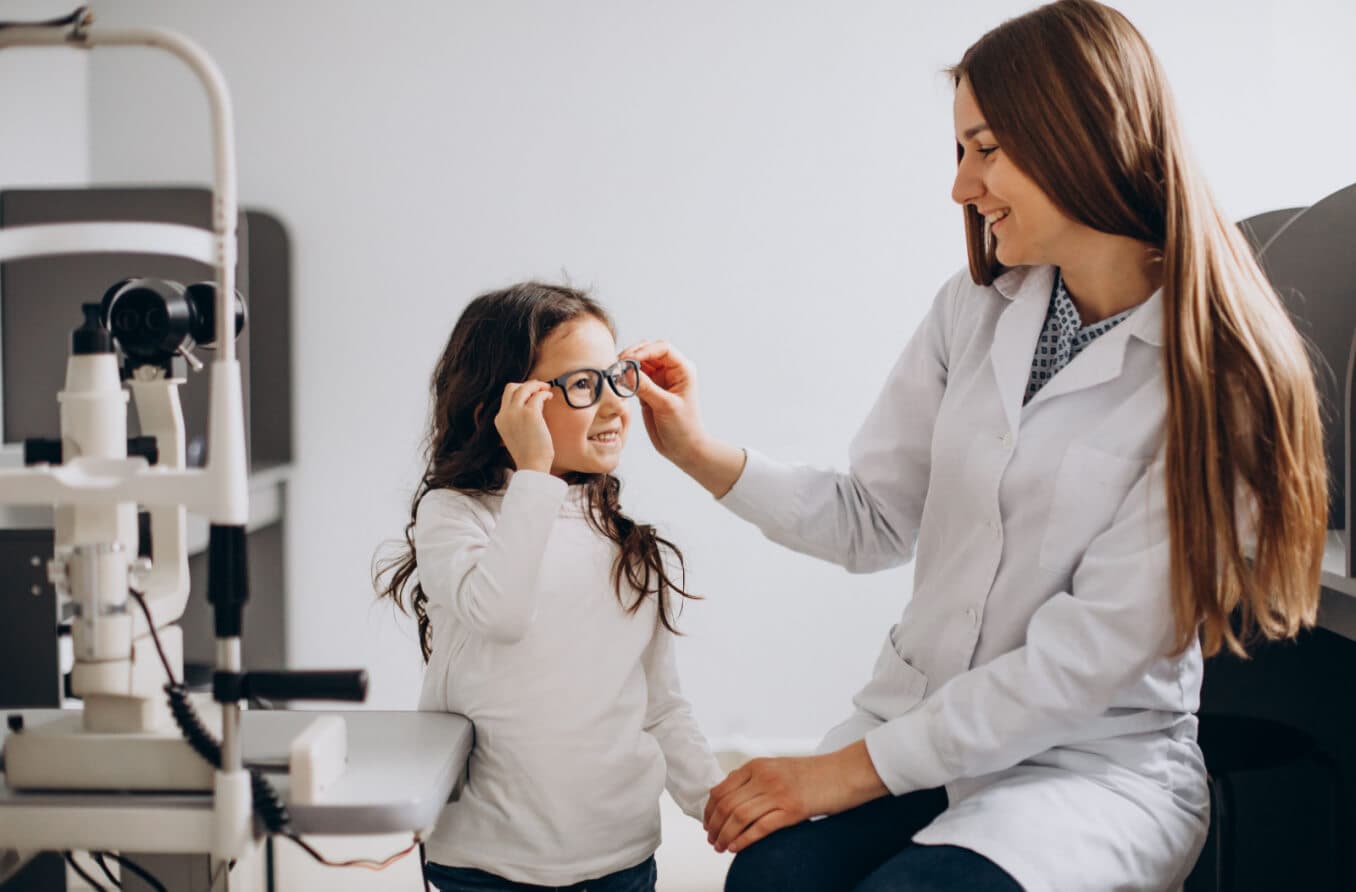High myopia and associated rare conditions in children
Young children who have high myopia (greater than – 6.00 diopters)may have an associated underlying eye or medical condition. If a young child has high myopia, it is important to discuss with the child’s doctor whether they should be evaluated for any underlying medical conditions.
A three-year study of patients at two ophthalmology hospital units examined which conditions were associated with high myopia in children. Of 112 children under 10 years of age, more than 90% had some type of underlying condition — ocular, orthoptic, systemic or any combination thereof.
In over half the children, there was an associated systemic condition, such as Stickler syndrome or Marfan syndrome, that affected the connective tissue in the body. This is the tissue that surrounds and supports the organs, and maintains the overall structure of the body. These are considered systemic conditions because their effect on the connective tissue causes abnormalities and symptoms in the entire body.
More than one-third of the remaining children had additional ocular or orthoptic abnormalities, which means they had effects on their eyes beyond those of the high myopia. Examples include retinopathy of prematurity and anisometropic amblyopia. A number of these conditions are relatively rare.
Some of the conditions discussed in this article are syndromes, which means they have a group of symptoms that occur together.
Here are some of the rare underlying eye or medical conditions associated with high myopia in children:
Stickler syndrome
Stickler syndrome is a systemic condition that affects the connective tissue of the body. Due to this, the entire body is affected. Usually, the skeleton, joints, eyes and ears have complications.
Myopia can be one of the first indications of Stickler syndrome. Whether it’s present at birth or develops later, it usually does not get worse with age. In addition to myopia, other eye conditions that may be present in Stickler syndrome include:
Vitreoretinal degeneration (deterioration of vitreous humor and retina)
There are five types of Stickler syndrome, with Type I accounting for around 70% of all cases. The general medical issues associated with all types include:
Hearing loss
Palate abnormalities, such as cleft palate
Musculoskeletal disorders like scoliosis
Appearance of a flatter face
With Stickler syndrome, there’s a great deal of variation regarding the presence and severity of symptoms.
Weill-Marchesani syndrome
This rare genetic syndrome is a systemic connective tissue disorder that affects the entire body. People with Weill-Marchesani syndrome are usually short in stature and have a broad head shape. They often have palate, jaw and teeth abnormalities. Many experience joint stiffness, while some may have heart defects.
In addition to myopia, eye conditions that may be present in Weill-Marchesani syndrome include:
Abnormal position of the lens
Abnormal shape of the lens (round instead of ellipsoid)
Cataracts
Visual acuity may also be affected, so that even after their myopia is corrected for, a person with Weill-Marchesani syndrome may experience blur or some degree of visual impairment.
Marfan syndrome
Nearly one in five individuals with Marfan syndrome has high myopia. Caused by a gene mutation, Marfan syndrome is a rare systemic condition that affects the connective tissue in the body. The eyes, skin, heart, blood vessels and bones can all be damaged due to this syndrome. People with Marfan are usually tall and thin, and they may have very long legs and arms.
A dislocation of the lens occurs in four out of five people with Marfan syndrome. If an individual has both high myopia and lens dislocation, they are at higher risk of retinal detachment, particularly in their 20s.
Ehlers-Danlos syndrome
This syndrome is a group of conditions that is caused by abnormal collagen protein in the connective tissue. Of the 13 variations of Ehlers-Danlos syndrome (EDS), the most common types have symptoms that include loose joints and easily bruised skin. Some complications that can occur in the many types of the syndrome include heart, spine, gum and teeth issues.
People with EDS may have eye complications as well, including high myopia. Additional complications of the eye include:
Thinning of the cornea, causing light sensitivity and blur
Bluish tinge to the sclera (the white of the eye)
Retinopathy of prematurity
Retinopathy of prematurity (ROP) may occur in infants that are born prematurely at a low birthweight. It occurs in both eyes and is classified from stage I (mild)to stage IV (severe). It causes damage to the retina and places the child at higher risk of developing retinal detachment, vision loss and blindness later in life.
In addition to high myopia, ROP may also cause:
Glaucoma
Strabismus
Ocular albinism type I
This type of ocular albinism is also called X-linked ocular albinism because it affects males. The hair and skin of people who have this type of ocular albinism are not affected.
The eye disorders that occur with this condition do not get worse over time. Refractive errors can include both high myopia and high hyperopia (farsightedness). Additional symptoms include:
Nystagmus (involuntary back-and-forth movement of the eyes)
Reduced depth perception due to neural abnormalities from the eye to the brain
Poorly developed fovea, resulting in poor visual acuity
Light sensitivity
Strabismus
Homocystinuria
Homocystinuria is a rare genetic condition that can affect the nervous system as well as the vascular system. It blocks the body from metabolizing a certain amino acid, resulting in complications from buildup in the body. If not treated, homocystinuria can result in eye and medical issues, some of which are similar to those seen in Marfan syndrome.
In addition to high myopia, ocular complications include:
Retinal detachment
Displaced lens
Glaucoma
The effects of homocystinuria on infants range from relatively mild — having only a small amount of delayed development — to relatively severe — exhibiting a failure to thrive.
Noonan syndrome
Noonan syndrome is a rare genetic condition that affects the growth of different parts of the body. The heart, facial features, multiple organ systems, vision and hearing are some of the areas of the body that are affected. In many cases, it is diagnosed at birth or in early childhood.
People with Noonan syndrome often have a shorter stature and a wide neck with bright blue-green or blue eyes. Intellectual development is normal in most individuals, although failure to thrive and developmental delays are not uncommon.
In addition to causing high myopia in some individuals, the following eye conditions may be present in Noonan syndrome:
Visual impairment due to optic nerve abnormalities and nystagmus
Eye alignment issues
Abnormalities in the front of the eye and back of the eye
Other associated eye features include drooping upper eyelids, wide-set eyes, skin folds and downward-slanting eyes.
Primary congenital glaucoma
Congenital glaucoma is a rare genetic condition that affects babies and young children. In addition to a high intraocular pressure, it is associated with three symptoms often seen together:
Light sensitivity
Excessive tearing or watery eyes
Vision loss can occur due to optic nerve damage or scarring of the cornea. High, progressive myopia, astigmatism, and amblyopia may also be present and result in reduced vision.
High myopia in children and comprehensive eye exams
Children can develop permanent vision loss if a treatable condition is not identified and managed early in life. So, while high myopia can occur in children without the presence of an underlying condition, it’s important to consider the possibility of an associated condition if a child has high myopia.
A comprehensive eye exam that can identify high myopia and other common or rare conditions is essential in correcting and managing eye and vision problems in children. An eye doctor can refer the child for appropriate medical evaluation if an associated underlying condition is suspected.










